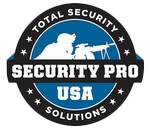![Active Shooter Preparedness: How to Protect Your Business [+ Checklist]](http://www.securityprousa.com/cdn/shop/articles/shooter.png?v=1657834008&width=1100)
It’s a scenario no business wants to think about: an active shooter on the premises. Yet, active shooter incidents remain a concern for millions of employees and impact thousands of lives each year, stressing the importance of understanding the risks and formulating risk mitigation strategies.
Each year the FBI provides a full account of documented active shooter incidents in the U.S., shedding light on where and when they occur. Their data suggests that while some industries face greater risk than others, all organizations now face an unfortunate reality: no company is exempt from the potential threat of an act of violence occurring on their premises.
In this post, we’ll analyze the FBI’s data to understand the risk factors businesses should consider when formulating an active shooter preparedness strategy and discuss emergency management best practices for before, during, and after an incident occurs.
What Is an Active Shooter?
Not all gun-related violence is considered an active shooter event. The FBI defines an active shooter incident as “one or more individuals actively engaged in killing or attempting to kill people in a populated area.” Given the high volume of gun-related incidents, the FBI reports only on incidents involving the use of a firearm (as opposed to other types of weapons) that meet one or more of the following criteria:
Incidents occurring in public places
Incidents occurring at more than one location
Incidents where the shooter’s actions were not the result of another crime
Mass casualty events
Shootings that appear to be spontaneous acts
Incidents where the shooter appeared to methodically search for victims
Shootings that appear to focus on individuals, not buildings or objects
Active Shooter Statistics
An active shooter situation can occur anywhere, but the FBI data also shows that certain types of organizations are at a greater risk. From 2000 to 2019, 333 active shooter incidents occurred in 43 different states (and the District of Columbia), collectively resulting in 2,851 casualties. Of the 333 incidents, 96 (29%) took place at a business location open to pedestrian traffic—by far the highest percentage.
Source: FBI, Active Shooter Incidents 20-Year Review, 2000-2019
Tragically, according to U.S. Department of Homeland Security and FBI data, active shooter incidents continue to rise across the country, with 40 incidents in 2020 alone. Of these incidents, 24 (60%) occurred in a business environment.
There is no way to predict when or where an active shooter incident will occur. For that reason, it’s critical that organizations prepare ahead of time, ensure employees are equipped with appropriate training and tools, and have a reliable method of reaching those in harm’s way, should they be involved in an active shooter scenario. Below, we’ll cover best practices for each preparedness strategy.
Active Shooter Preparedness Strategies
Whether an attack is targeted or random, having an effective active shooter response plan in place is the first line of defense. The following emergency preparedness framework was developed by the U.S. Department of Justice and aligns with guidance from the Department of Homeland Security (DHS). It consists of five main areas of active shooter preparedness: Prevention, Protection, Mitigation, Response, and Recovery.
1. Prevention
Even the best-laid plans can’t guarantee absolute safety. However, there are factors every business should consider as they look for ways to prevent active shooter events.
Organizations should implement employee screening and background checks for new hires. Additionally, fostering a positive, inclusive work environment and treating every employee with compassion and respect can often curtail the behaviors that lead to an active shooter event. Finally, DHS recommends that organizations create systems for reporting signs of potentially violent behavior and ensure employees have access to training videos detailing what to do if they witness any type of workplace violence.
Additionally, while there are no clear-cut indicators that a current or past employee might engage in a violent act, here are some red flags to look for.
Common pre-attack behaviors include:
Increased use of alcohol and/or illegal drugs
Signs of depression, withdrawal, or severe mood swings
Resistance and overreaction to changes in policy or procedures
Behavior suggesting paranoia
A sudden decline in mental health
History of aggression toward authority figures
An increase in unsolicited comments about firearms, weapons, and violent crimes
Expressing empathy with other individuals committing violence
A fascination with past shootings/mass attacks
A traumatic life event such as a death, breakup/divorce, or loss of employment
Being the victim of bullying in the workplace
These warning signs are by no means an exhaustive list, and they certainly don’t always suggest an impending threat. But staying aware of some common behaviors could potentially prevent an attack.
Keeping you Protected: www.SecurityProUSA.com

0 comments